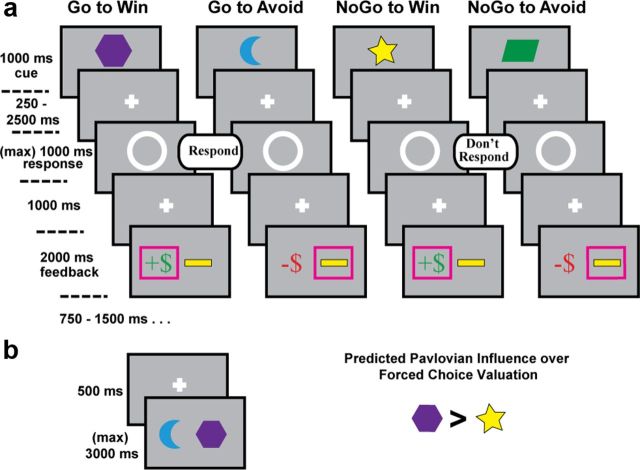Figure 1.
Tasks. a, Training phase. Four different cues were 70% predictive of unique optimal combinations of action and outcome: Go-to-Win, Go-To-Avoid, NoGo-To-Win, and NoGo-to-Avoid. In the context of a Pavlovian bias over performance, conditions with congruent action-outcome pairings should be easy to learn (Go-to-Win, NoGo-to-Avoid), whereas conditions with conflicting action-outcome pairings should be hard to learn (Go-to-Avoid, NoGo-to-Win). b, Posttraining transfer phase. Each cue was paired together in a two-alternative forced-choice testing phase; participants were told to select the most rewarding stimulus. It was hypothesized that participants would show a Pavlovian bias during this phase by selecting Go-to-Win more than NoGo-to-Win cues.

